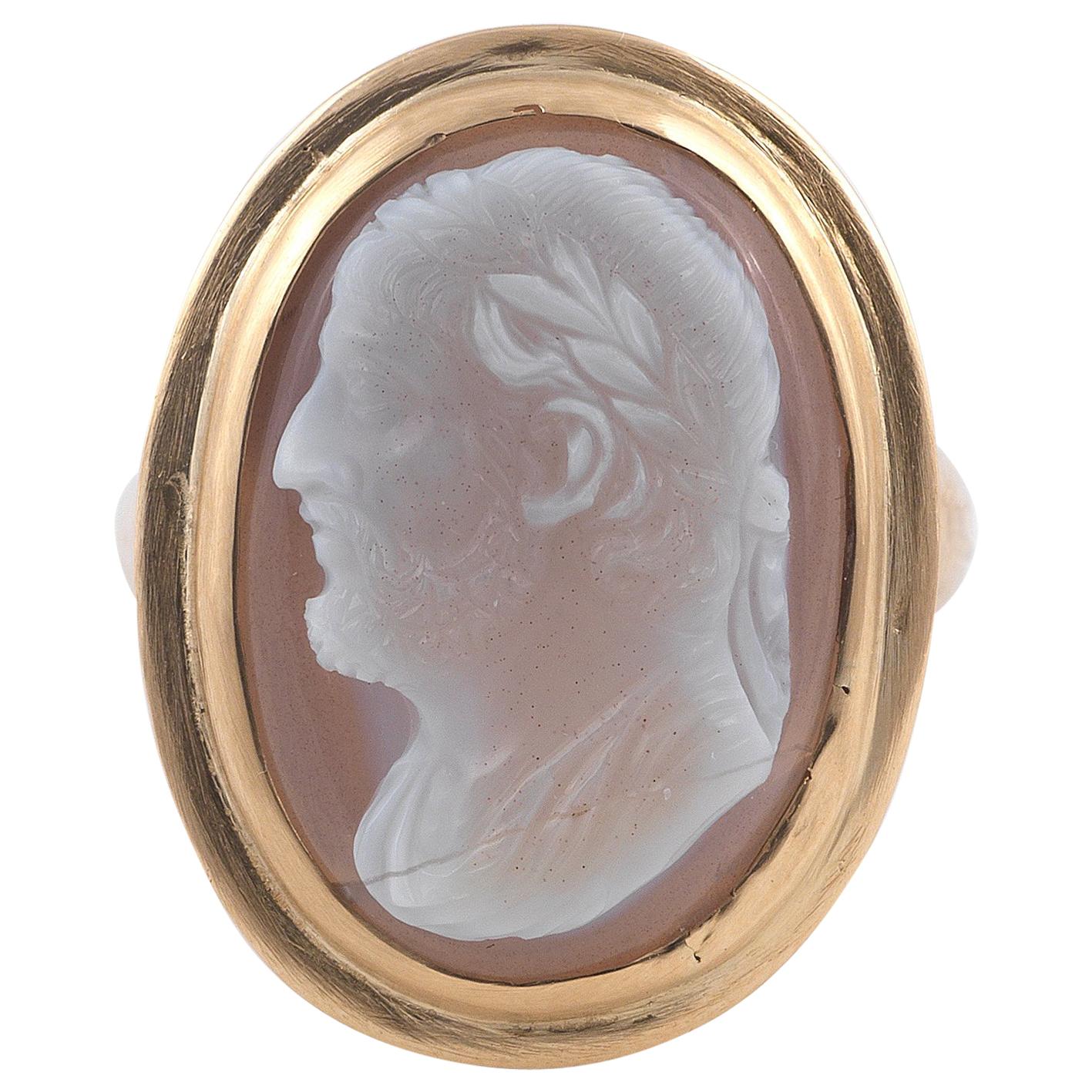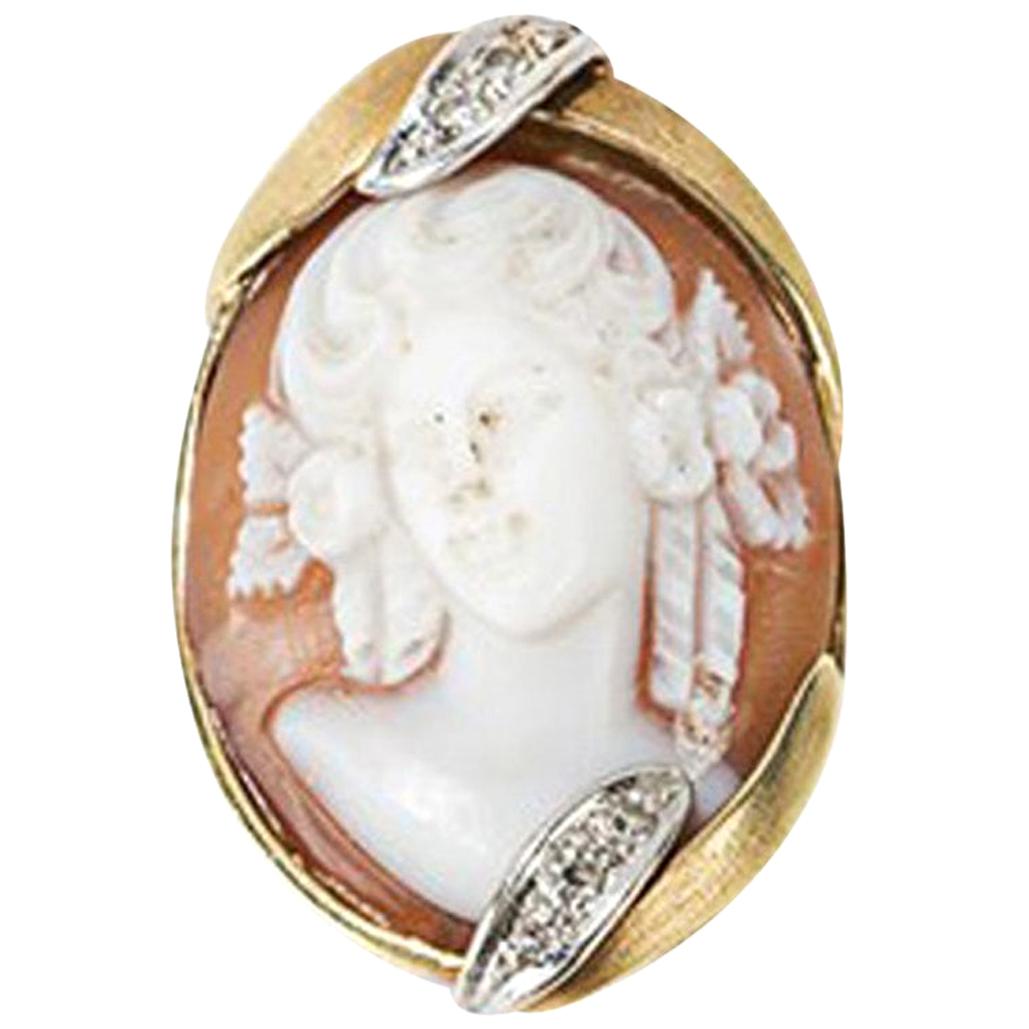Items Similar to 19th century "faith, hope and love" locket remembrance ring
Want more images or videos?
Request additional images or videos from the seller
1 of 6
19th century "faith, hope and love" locket remembrance ring
About the Item
Locket ring, 18 karat gold, made late 19th century / early 20th century.
Top is decorated the form of faith, hope and charity/love with a hidden compartment underneath, enamel a bit worn by loving use.
Weight approx. 2.6 grams,
size approx. 18.5/58 US 8,5.
Faith, Hope and love / charity
The three symbols that capture the essence of life - work of faith, labor of love, and patience of hope.
The allegory of faith, hope and charity are important symbols of the early modern period, becoming prominent from the late 18th century and still utilized today in jewels.
The cross for faith, anchor for hope and the heart for love or charity. All hinge on the trustworthiness of the person or object of an individual's core belief.
The heart and cross might speak for themselves, but the anchor as a metaphor for "hope" might need some explaining. During the Napoleonic Wars, it became a relevant popular symbol at a time when seafaring meant that return of a loved one was uncertain. Essentially, it meant "come back safely to me", not necessarily by ship, but in general. Hope is fundamental to the principals of what it is to believe in a better future.
There is also the allusion to the holy trinity with the faith, hope and charity symbols.
By the second half of the 19th century, the symbols had become standard and common charms to wear both by men and women. Typically, these motifs were used and given in charms or jewelry as a token of one’s love and remembrance.
As attributed to the Apostle Paul, this quote from 1 Corinthians 13 shows the genesis of faith, hope and charity:
“And now these three remain: faith, hope and love. But the greatest of these is love.”
Resizing is available.

About the Seller
5.0
Recognized Seller
These prestigious sellers are industry leaders and represent the highest echelon for item quality and design.
Platinum Seller
These expertly vetted sellers are 1stDibs' most experienced sellers and are rated highest by our customers.
Established in 2015
1stDibs seller since 2022
31 sales on 1stDibs
Typical response time: <1 hour
- ShippingRetrieving quote...Ships From: Malmö, Sweden
- Return PolicyA return for this item may be initiated within 3 days of delivery.
More From This SellerView All
- A 19th century diamond and zircon rose broochLocated in Malmö, SEWhen the line between want and need becomes quite blurry. A 19th century 18 karat rose brooch set with an approx. 5ct blue zircon surrounded by 269 antique, old, table and rose cut ...Category
Antique Late 19th Century European Victorian Brooches
MaterialsDiamond, Zircon, 18k Gold, Yellow Gold, Silver
- 19th century onyx and diamond pendant earringsLocated in Malmö, SEA pair of late 19th century onyx and diamond pendant earrings. Super elegant! Each elongated onyx drop highlighted with a rose-cut di...Category
Antique Late 19th Century Drop Earrings
MaterialsDiamond, Onyx, Gold, Silver
- Georgian crowned diamond heart ring from turn of the century 18th/19th century.Located in Malmö, SEGeorgian crowned heart ring from turn of the century 18th/19th century, circa 1780 – 1810. Making this ring some 240 years old! Decorated w...Category
Antique Late 18th Century European Georgian Bridal Rings
MaterialsDiamond, Gold, 18k Gold, Yellow Gold, Silver
- 19th century rock crystal and carved smoky quartz demi-parureLocated in Malmö, SEhis unusual and lovely victorian set of faceted rock crystals and carved smoky quartz was made in the second half of the 19th century. Natural rock crystals are saluted for its way of bending the light into a “pool” of light around the wearer. They are absolutely magical and look fabulous when worn. Rock crystal is the clear transparent variety of quartz (silicon dioxide) and has a MOHS hardness rating of 7. This makes them harder than, say, opal but softer than emerald (7.5) and topaz (8). Featuring two genuine rock crystal briolettes. The beautiful briolettes are pear shaped and faceted. They sparkle beautifully. Truly special heirloom earrings...Category
Antique Late 19th Century Dangle Earrings
MaterialsCrystal, Quartz, Rock Crystal
- Antique Early 19th Century Cut-Steel NecklaceLocated in Malmö, SECut steel jewelry was at the height of fashion from the mid 1700s well into the 19th century. Originated in the 1700s. Popular from the Georgian through the Victorian eras. To make cut steel, melted horseshoe nails were formed into tiny faceted beads. Those small steel gemstone-like studs were then riveted one-by-one onto a base plate. It was an English invention that quickly travelled throughout the world. Each stud could have up to 15 facets, and in general the finer and older the piece the more facets the studs will have. Improvements in candles meant that grand events and entertaining could take place at night. As diamonds are diamonds and not available for everyone, and everyone wanted to shine, the popularity grew. Cut-steel provided a stylish and popular new jewelry material that could be enjoyed by everyone at all levels of society. It grew beyond a simple imitation to an art in its own right. The manufacturing was complex and the workmanship that was required highly skilled. These were not mass produced objects. The studs were made from decarbonated cast steel, which was case-hardened, then the studs were faceted by cutting against a pewter wheel. Next were then polished with first fine emery and a hard brush, and then by hand with a special putty. Finally they were riveted onto pierced base plates which had to be drilled and cut by hand, too. The main place of cut steel production was Birmingham, England. And there, one manufacturer stood out from all the rest: Matthew Boulton. He had been born in 1728 into the industry — his father manufactured small metal products. But the younger Boulton had a special talent for marrying the latest technology with the latest fashion. He also was continually expanding — he even founded a mint. He wined and dined with dignitaries and advocated for his steel products. Fortuitously, he became quite close with the Russian ambassador to Catherine the Great. When the ambassador toured the mint, Boulton made sure to send the Empress some of his cut-steel necklaces. In 1759, Louis XV “encouraged” the nobility to donate their gold and gemstone jewelry to help fund the Seven Years War. The popularity of cut steel in France may in part have been due to these sumptuary laws which limited who could wear precious metals and diamonds. Either you complied with the law and gave up your family jewels to be melted down for the war chest...Category
Antique Early 19th Century English Early Victorian Link Necklaces
MaterialsSteel
- A pair of 19th century opal and diamond cluster earrings. Silver over gold.Located in Malmö, SEA pair of pastel-colored, round cabochon opals are flanked by shimmering rose-cut diamonds, set in darkened silver over 18kt. gold, in these charming and lively ear poppers. The ea...Category
Antique Late 19th Century European Late Victorian Stud Earrings
MaterialsDiamond, Opal, Gold, 18k Gold, Yellow Gold, Silver
You May Also Like
- 19th Century Gold and Agate Cameo RingLocated in Firenze, ITOval, depicting the profile of a man with curling hair, facing left, wearing robes, within a yellow gold mount, cameo length 2.3cm, width 1.7cm, ring size 7 1/2Category
Antique Early 19th Century Italian Victorian Signet Rings
MaterialsAgate, 18k Gold, Yellow Gold, Gold
- Hardstone Cameo of a Man Ring 19th CenturyLocated in Firenze, ITThe portrait head, facing right, with short hair and clean shaven, in a later ring mount, ring size 8 length 29mm, width 16mmCategory
Antique 19th Century Italian Signet Rings
MaterialsAgate, 18k Gold, Yellow Gold
- Gold Ring with Shell Cameo and Diamonds, Late 19th CenturyLocated in Berlin, DEGold ring with shell cameo and diamonds, late 19th century. 14 carat gold Europe, end of the 19th century Finely cut mussel cameo Platinum clasps with 6 diamonds hallmark and manufa...Category
Antique Late 19th Century German Belle Époque Band Rings
MaterialsDiamond, 14k Gold
- 1848 Ring Signet Intaglio Faith Love Hope Glass 18K Gold US4.5 / 2.35 grLocated in SEGreat Signet Ring in solid 18K Yellow Gold with detailed hand - engraved intaglio with symbols of Faith Hope and Love on convex shaped paste Glass 8.3mm x 7.3mm x 1.5mm deep .Well do...Category
Antique 1840s Swedish Renaissance Revival Signet Rings
Materials18k Gold
- Late 19th Century Gold Agate Seal Signet RingLocated in Firenze, ITDutch marks, stamped 585. Ring size 8 . 17gms.Length of ring head 2.3cms.Band with Dutch marks for 14ct gold. Maker's mark AJR. Seal possibly Austrian.Category
Antique Late 19th Century Austrian Victorian Signet Rings
MaterialsAgate, Gold, 14k Gold
- Antique 19th Century Natural Pearl Onyx Cameo Ring and Pendant SetLocated in beverly hills, CAAn antique ring and pendant set with a two-layered cameo on onyx, oval in shape representing the profile of a woman. The ring features a graceful feminine silhouette framed by a cap...Category
Antique 19th Century Napoleon III Cocktail Rings
MaterialsOnyx, Natural Pearl, 14k Gold, Yellow Gold





